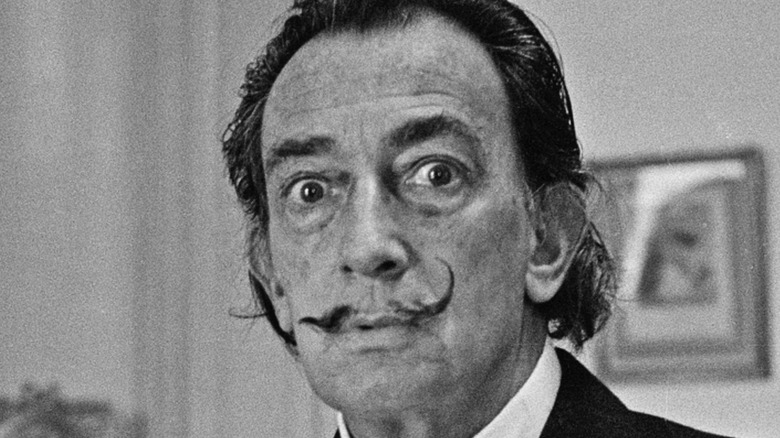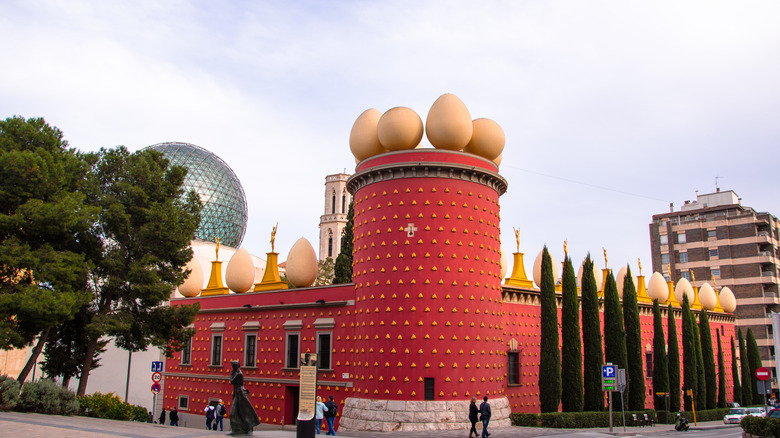The Truth About Salvador Dali's Politics
Famed Spanish artist Salvador Dali created his own visual universe in iconic paintings like "The Persistence of Memory." While his art was vivid and original, his political views were sometimes vague and other times unsettling. Dali also seemed to shift his political views over the years. His odd take on politics even contributed to his falling out with the Surrealists.
Dali became involved with the Surrealist art movement in 1929. In Paris, he made a short film, "Un Chien Andalou," with Luis Buñuel, which featured short scenes showing unusual and disturbing images (via the Museum of Modern Art). The Surrealists admired the movie, and both Dali and Buñuel became part of the group established by André Breton. Politically, the Surrealists supported communism and the French Communist Party. Dali seemingly believed in these ideals as well. But in the 1930s, he also developed a fascination with fascism. According to the Smithsonian Magazine, Dali claimed that he had a dream of Adolf Hitler "as a woman" who "ravished me."
By 1934, the Surrealists reached a breaking point with Dali. Breton argued for Dali's ouster from the group because he was "guilty on several occasions of counterrevolutionary actions involving the glorification of Hitlerian fascism, the undersigned propose that he be excluded from surrealism as a fascist element and combated by all available means" (via Mental Floss).
Dali played politics to his advantage
Salvador Dali's political positions continued to fluctuate as the years went on. Right before the start of the Spanish Civil War, he painted "Soft Construction with Boiled Beans (Premonition of Civil War)." The work's gruesome imagery featured a figure ripping itself apart, and the painting was taken by many to be an anti-war statement (via Smithsonian Magazine). But when the war broke out, Dali expressed his support for General Francisco Franco and his Nationalist movement, which was aided by two fascist countries, Italy and Germany.
Dali stepped away from Europe during the next major military conflict, World War II. He and his wife, Gala, moved to the United States in 1940 where they stayed for the duration of the war. During this time, Dali penned his autobiography and declared that "I'm totally apolitical!" (via Art Pulse magazine). In 1948, he returned to Spain, then ruled by General Franco, and cultivated a relationship with this widely despised dictator. Dali painted a portrait of Franco's niece, María del Carmen Martínez de Bordíu Franco, which he gave to the Spanish ruler in 1972. But his connection to Franco seemed to come from a personal rather than a political agenda. In 1956, Dali got Franco's approval to build his own museum in his hometown. The artist designed the structure himself, which still stands to this day.

